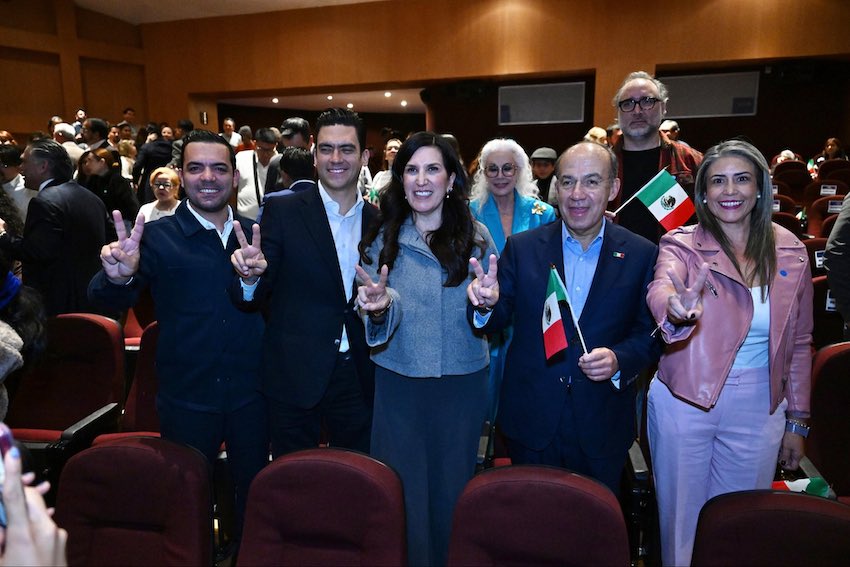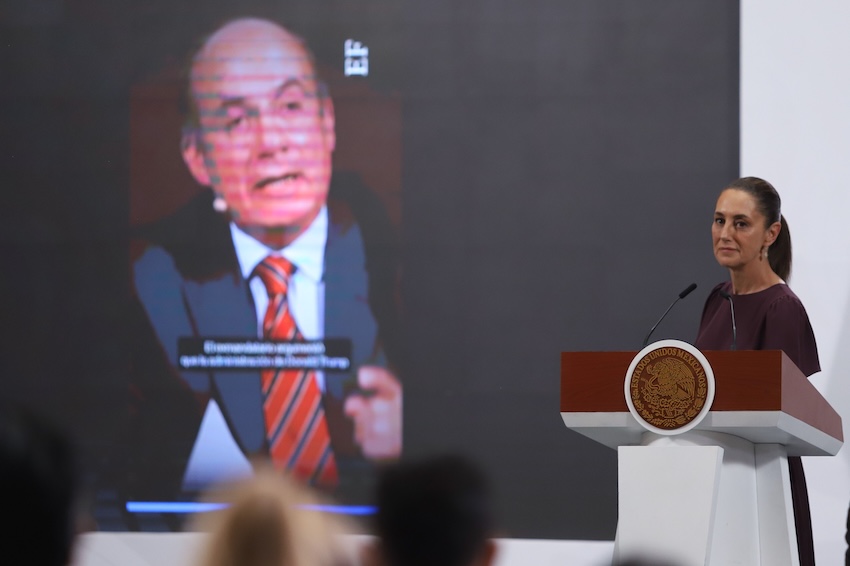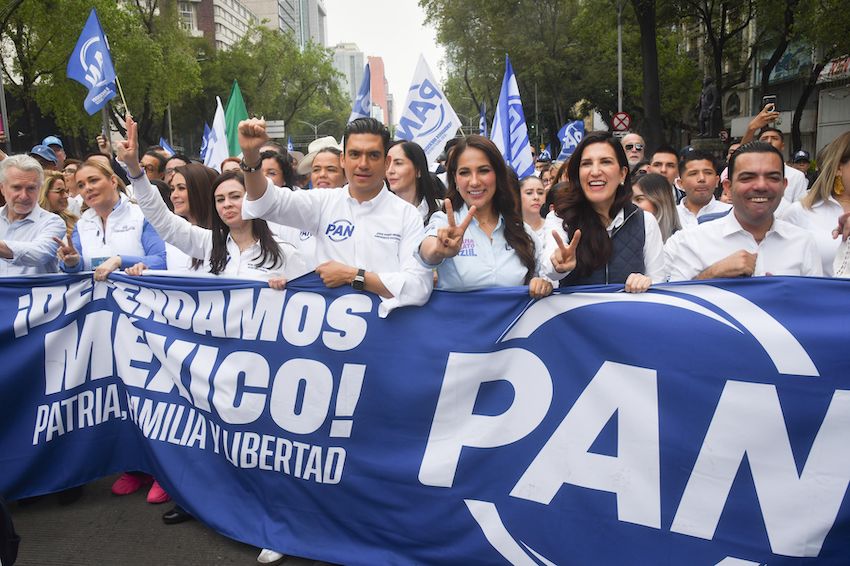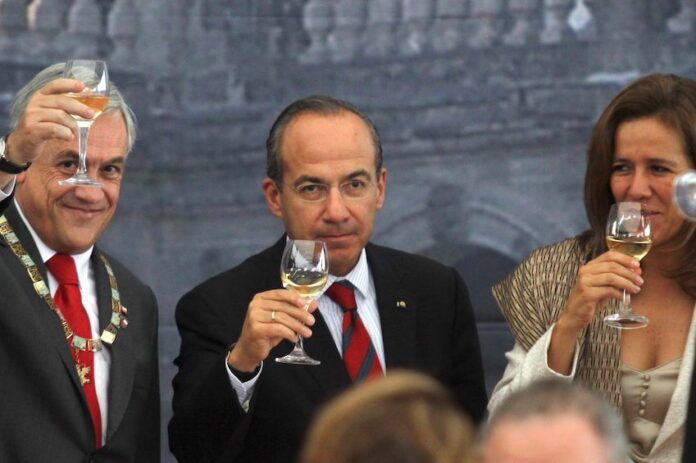Former Mexican president Felipe Calderón Hinojosa indicated on Monday that he is thinking about making some kind of political comeback more than a decade after completing his six-year term.
Calderón, president from 2006 to 2012, hinted at a return to politics when he was asked in an interview about the relaunch of the National Action Party (PAN), the party he represented.

The 63-year-old ex-president said that he was interested in finding out what “exactly” the PAN relaunch consists of, and how the “relaunch process” will be carried out, “before making a personal decision that might involve returning to active politics, or not.”
Journalist Azucena Uresti put it to Calderón that he wanted to see “the results” of the PAN relaunch before deciding whether he would “actively return to the PAN,” or “let’s say politics.”
“To politics in general,” Calderón said, adding that he didn’t know whether he would return to the PAN, a conservative party that is currently the main opposition to the Morena party and its allies.
The ex-president quit the PAN in 2018, saying at the time that it had ceased to be “an instrument of citizen participation for the construction of a better Mexico” and that it had abandoned its “fundamental principles.”
In 2020, Calderón asserted that the México Libre (Free Mexico) political movement he co-founded with his wife, Margarita Zavala, would become the sole alternative to Morena.
However, later in 2020, the National Electoral Institute rejected an application to register México Libre as a political party due to questions over its funding.
Zavala, who launched an independent bid for the presidency in 2018, has been a federal deputy for the PAN since 2021. Calderón could potentially seek to enter the Chamber of Deputies or the Senate sometime in the future. Mexico’s next federal elections, at which the Chamber of Deputies will be renewed, will be held in 2027. Deputies, senators and a new president will all be elected in 2030.

A return to the presidency is out of the question for Calderón as the Mexican Constitution prohibits presidents from serving more than one six-year term.
The Michoacán native, who narrowly defeated Andrés Manuel López Obrador in the 2006 presidential election, is a controversial figure in Mexican politics. He is perhaps best remembered for launching a militarized war on drug cartels shortly after he took office in late 2006.
López Obrador, who claimed that he was the rightful victor of the 2006 election, blamed Calderón for the high levels of violence that plagued Mexico during his 2018-24 presidency.
President Claudia Sheinbaum is also a fierce critic of Calderón, a former secretary general and president of the PAN, and energy minister for a period during the 2000-2006 presidency of Vicente Fox.
Since leaving the presidency in 2012, Calderón has worked in academia, in the private sector, and as a keynote speaker. In contrast to his successor, Enrique Peña Nieto, and López Obrador since he left the presidency, Calderón is regularly active on social media, where he comments on a range of Mexican and international issues.
The PAN relaunch
The National Action Party, founded shortly after World War II began in 1939, relaunched itself as a “more open, democratic and citizen-focused” party at an event in Mexico City on Saturday.
PAN national president Jorge Romero Herrera asserted that the party will be the “most open” in Mexico, with candidates selected via primary processes.
According to a statement issued by the PAN, the party’s relaunch is based on three central tenets:
- Redefinition of the “causes” of the party, “reviving panista pride and empathy with the people.”
- Reform of the PAN’s statutes in order to commence a new “stage of participation, transparency and democracy” in the party.
- A refresh of the party’s “visual identity, with a revamped logo that reflects modernity, approachability and pride in its history.”

Romero also announced that the PAN will no longer be part of alliances with other political parties, including the Institutional Revolutionary Party, or PRI, which governed Mexico for most of the 20th century.
“The alliance that will most define our destiny is the one we will have with citizen leaders,” he said.
“… We want [the] National Action [Party] to be a vehicle for citizens that allows all Mexicans to decide who the best candidates are,” Romero said.
The PAN contested the 2021 and 2024 federal elections as part of an alliance that also included the PRI and the Democratic Revolution Party, or PRD.
The PRD lost its registration as a national-level political party after its poor showing at the 2024 elections. The influence of both the PRI and the PAN in national politics has been greatly diminished since the emergence of Morena as Mexico’s dominant political force in 2018, the year in which López Obrador won the presidency and the party he founded seized control of both houses of Congress.
Calderón: PAN is ‘on the right track’
Calderón said on Monday that he believed that the PAN is now “on the right track,” premising his view on “what was said or what was promised” by the party at its relaunch event.
He stressed the importance of the party fulfilling its promises.
Calderón said that “openness” to citizens — i.e., giving ordinary Mexicans a say in the management of the PAN and the selection of candidates — has been “the most important demand” regarding the political party. Openness to citizens is the party’s “most important need,” he added.
While offering a positive overall assessment of the PAN’s relaunch, Calderón was not enthused by the party’s decision to terminate its political alliances.
“Alliances have advantages and disadvantages. I think that the PAN shouldn’t break the relationship it finally managed to build with the PRI, with MC [the Citizens Movement party], with other parties,” he said.
“There are good people and very bad people in the parties, in all of them,” Calderón said.
The ex-president didn’t attend the PAN’s relaunch event in Mexico City on Saturday, but on Monday, he was in the audience when his wife and other PAN deputies presented reports on their work as members of Mexico’s lower house.
At the event, Calderón is seen sitting next to Romero in a photograph the PAN national president posted to social media.
Whether Calderón discussed a possible political comeback with the PAN’s national leader was unclear.
With reports from Radio Fórmula, Sin Embargo and El Financiero
